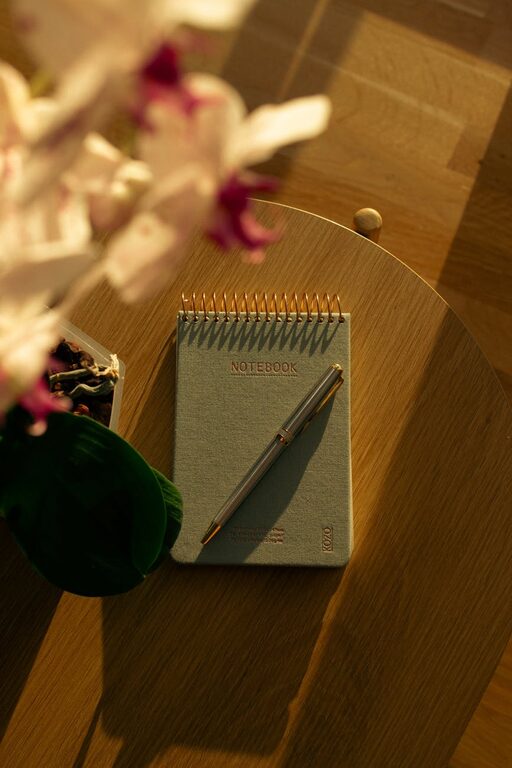
Choosing a notebook might seem like a simple task, but picking one that you’ll actually reach for and use consistently takes a bit more thought. Whether you jot down ideas, make to-do lists, or keep a daily journal, having the right notebook can make a big difference in how you stay organized and inspired. In this guide, we’ll explore practical factors to consider when selecting your perfect notebook.
Why Choosing the Right Notebook Matters
You might wonder why it matters so much which notebook you pick. After all, aren’t all notebooks pretty much the same? Not quite! The right notebook fits your lifestyle, writing habits, and preferences, encouraging you to use it regularly rather than letting it sit empty on a shelf.
A suitable notebook can:
– Enhance your productivity
– Encourage consistency in note-taking or journaling
– Inspire creativity with the right texture and layout
– Suit your portability needs
With this in mind, let’s dive into how you can pick a notebook that truly works for you.
1. Consider the Purpose of Your Notebook
Start by deciding what you want to use your notebook for. Different uses call for different types of notebooks.
Journaling or Creative Writing
If you plan to use the notebook for journaling or creative writing, consider:
– Paper quality that handles various pens well
– A size that’s comfortable to carry and write in
– A notebook that feels inviting to open and use
Work or Study Notes
For work or study, you might want:
– A durable cover to protect notes throughout the day
– Organizational tools such as page numbers or index pages
– Pre-printed sections like bullet points, grids, or lines to keep writing neat
Planning and To-Do Lists
If your goal is task management:
– Look for a layout that supports lists and priorities, like dot grids or bullet journals
– Possibly notebooks with built-in calendars or habit trackers
2. Choose the Right Size
Notebooks come in many sizes, and each has pros and cons.
Pocket-Sized Notebooks
– Easy to carry everywhere
– Great for quick notes or ideas on the go
– Usually limited writing space
A5 or Medium Notebooks
– Balanced size, fits in most bags
– Provides enough room for detailed notes
– Popular for everyday use
Larger Notebooks (A4 or Letter Size)
– More space for detailed planning or drawing
– Great for desk use
– Less portable
Think about where and how you will use your notebook most often, then pick a size that feels practical.
3. Pick the Paper Type and Quality
Paper quality influences how enjoyable writing feels and how well the notebook holds up over time.
Paper Weight
Measured in grams per square meter (gsm), heavier paper (around 100 gsm or higher) is thicker and less likely to bleed through. Lighter paper (around 70-80 gsm) is thinner and more common but may not handle heavy ink or markers well.
Paper Texture
– Smooth paper is pleasant for pen and pencil writing
– Textured paper can be better for graphite or charcoal but may feel rougher with pens
Lined, Dotted, or Blank Pages
– Lined pages help keep writing straight
– Dotted grids are versatile for drawing, note-taking, and planners
– Blank pages provide freedom for sketches or free-form notes
Consider your preferred writing instruments and style when choosing paper type.
4. Select the Binding Style
How the notebook is bound affects durability and the writing experience.
Spiral Binding
– Opens flat easily
– Pages can be flipped around or torn out
– May be less durable and can snag
Hardcover Binding
– Sturdy and protects pages
– Adds weight and bulk
– Often opens flat or nearly flat
Softcover or Flexible Binding
– Lightweight and portable
– Less protection for pages
– May not lay flat easily
Decide what fits your lifestyle, whether you prioritize durability or portability.
5. Think About Additional Features
Some notebooks come with extra touches that might be helpful.
– Pocket folders: For storing receipts or notes
– Elastic closures: Keep the notebook securely closed
– Pen holders: Make sure your pen stays with your notebook
– Numbered pages or indexes: Useful for organizing notes
– Perforated pages: For easy page removal
These extras might make your notebook more functional and enjoyable.
6. Consider Aesthetic and Personal Style
While function is key, how a notebook looks can also motivate you to use it.
Think about color, design, and cover material. A notebook that reflects your personality or makes you happy to open it will boost your enthusiasm.
7. Set a Budget
Notebooks range from inexpensive to premium prices. Identify your budget early so you can narrow down your options without feeling overwhelmed.
Remember that investing in a slightly more expensive, higher-quality notebook may encourage more frequent use and last longer.
Final Tips for Success
– Test before buying: If possible, write a few lines in the notebook to see how it feels.
– Buy from trusted brands: Known stationery brands often provide consistent quality.
– Don’t overthink: Sometimes, the best way to find your perfect notebook is to try a few and see which one you naturally use.
Choosing the right notebook is a personal decision that can support your daily habits and creativity. Take your time, consider your needs, and enjoy the process of finding a notebook you’ll truly use.
Happy writing!




